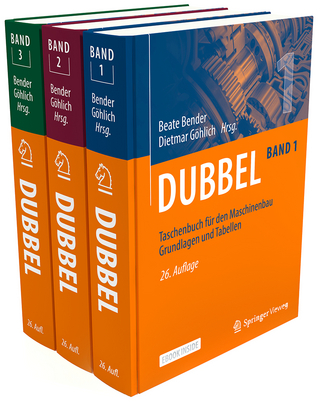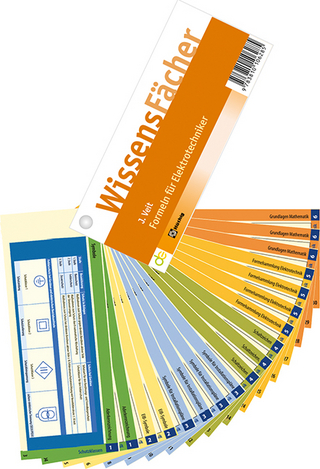
Introduction to Electric Circuits
John Wiley and Sons (WIE)
978-0-471-38689-6 (ISBN)
- Titel ist leider vergriffen;
keine Neuauflage - Artikel merken
Build valuable design and analysis skills with the leader in circuits education A remarkably accessible approach, numerous design problems, MATLAB examples, and a real-world focus on the circuits that we encounter everyday---there are just a few reasons why Dorf and Svoboda's INTRODUCTION TO ELECTRIC CIRCUITS has been so successful at helping students master circuit analysis and design. In their Fifth Edition, the authors have revised and enhanced their student-oriented text with several significant new changes, including: Coverage of Fourier transforms Revised set of problems and exercises, including more accessible design problems and examples that illustrate the solution to problems on the CD-ROM packaged with this text Revised chapter summaries in a new bullet-point format with summarizing tables But most importantly, this Fifth Edition provides students with the opportunity to hone their design and analysis skills with the new Electronic Teaching Assistant (ETA) on the Student Resource CD-ROM packed in this text. Practice and experiment with the new Electronic Teaching Assistant! The ETA features a powerful set of interactive learning tools in a web-based browser.
These tools includes: The Electric Circuits Workout. Develop and practice circuit analysis skills with this unique set or exercises, similar to quiz or exam problems. The Circuit Design Lab. These labs offer essential experimentation and design experience. Each lab exercise presents a circuit together with scroll bars that control the values of important circuit parameters. The Interactive Illustrations. These illustrations help the user to recognize connections between related concepts. They allow users to change key aspects of an illustration while observing the consequences.
Richard C. Dorf professor of electrical and computer engineering at the University of California, Davis, teaches graduate and undergraduate courses in electrical engineering in the fields of circuits and control systems. He earned a Ph.D. in electrical engineering from the U.S. Naval Postgraduate School, an M.S. from the University of Colorado and a B.S. from Clarkson University. Highly concerned with the discipline of electrical engineering and its wide value to social and economic needs, he has written and lectured internationally on the contributions and advances in electrical engineering. Professor Dorf has extensive experience with education and industry and its professionally active in the fields of robotics, automation, electric circuits, and communications. He has served as a visiting professor at the University of Edinburgh, Scotland; The Massachusetts Institute of Technology; Stanford University; of California, Berkeley. A Fellow of the Institute of Electrical and Electronic Engineers, Dr. Dorf is widely known to the profession for his Modern Control Systems, Eighth Edition (Addison-Wesley, 1998) and The International Encyclopedia of Robotics (Wiley 1988). Dr. Dorf is also the coauthor of Circuits, Devices and Systems (with Ralph Smith), Fifth Edition (Wiley, 1992). Dr. Dorf edited the widely used Electrical Engineering Handbook, Second Edition (CRC Press and IEEE Press) published in 1997. James A. Svoboda is an associate professor of electrical and computer engineering at Clarkson University where he teaches courses on topics such as circuits electronics, and computer programming. He earned a Ph.D. in electrical engineering from the University of Wisconsin, Madison, and M.S. from the University of Colorado, and a B. S. from General Motors Institute. Sophomore Circuits is one of Professor Svoboda's favorite courses. He has taught this course to 2500 undergraduates at Clarkson University over the past 21 years. In 1996, he received Clarkson University's Distinguished Teaching Award. Professor Svoboda has written several research papers describing the advantages of using nullors to model electric circuits for computer analysis. He is interested in the way technology affects engineering education and has developed several software packages for use in Sophomore Circuits.
Electric circuit variables; circuit elements; resistive circuits; methods of analysis of resistive circuits; circuit theorems; the operational amplifier; energy storage elements; the complete response of RL and RC circuits; the complete response of circuits with two energy storage elements; sinusoidal steady-state analysis; AC steady-state power; three-phase circuits; frequency response; the laplace transform; Fourier series and Fourier transform; filter circuits; two-port and three port networks.
| Erscheint lt. Verlag | 31.10.2000 |
|---|---|
| Überarbeitung | James A. Svoboda |
| Zusatzinfo | index, references |
| Verlagsort | New York |
| Sprache | englisch |
| Maße | 211 x 261 mm |
| Gewicht | 1843 g |
| Einbandart | gebunden |
| Themenwelt | Technik ► Elektrotechnik / Energietechnik |
| ISBN-10 | 0-471-38689-8 / 0471386898 |
| ISBN-13 | 978-0-471-38689-6 / 9780471386896 |
| Zustand | Neuware |
| Haben Sie eine Frage zum Produkt? |
aus dem Bereich


